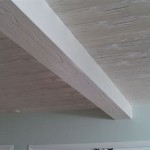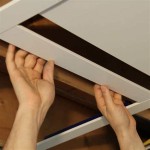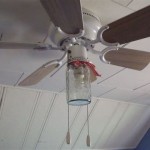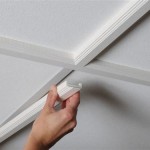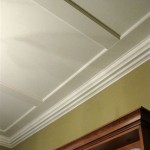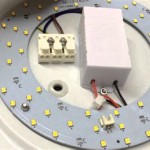Understanding Water Stains on Drop Ceiling Tiles
Drop ceilings, also known as suspended ceilings, are a common feature in commercial buildings, basements, and even some residential spaces. They offer several advantages, including concealing ductwork, wiring, and plumbing, as well as improving acoustics and providing easy access for maintenance. However, one of the most prevalent and unsightly problems associated with drop ceilings is the appearance of water stains on the tiles. These stains are not merely cosmetic blemishes; they are often indicators of underlying issues that can lead to more significant and costly damage if left unaddressed. This article will delve into the causes, consequences, and potential solutions for dealing with water stains on drop ceiling tiles.
The porous nature of most drop ceiling tiles makes them highly susceptible to absorbing water. When a leak occurs above the ceiling, the water permeates the tile material, leaving behind a visible stain. The color of the stain can vary depending on the type of water and any dissolved minerals or contaminants it carries. Clean water tends to leave a lighter stain, while water that has been in contact with rust, mold, or other materials can leave darker, more pronounced marks. Understanding the origins of these stains is crucial for effective remediation and preventing future occurrences.
Identifying the Source of the Leak
The first and most critical step in addressing water stains on drop ceiling tiles is to identify and rectify the source of the leak. Without addressing the root cause, simply replacing the stained tiles will only provide a temporary solution, as the problem will inevitably recur. Common sources of leaks above drop ceilings include plumbing issues, roof leaks, HVAC condensation, and even leaks from adjacent floors.
Plumbing leaks can originate from various sources, such as leaky pipes, faulty fixtures, or overflowing toilets. These leaks can be particularly problematic because they may not be immediately obvious. A slow, dripping leak can saturate a ceiling tile over time before becoming noticeable. Regularly inspecting plumbing lines above the drop ceiling, if accessible, can help detect and address these issues early on.
Roof leaks are another common culprit, especially in buildings with flat or low-sloped roofs. Damage to the roofing membrane, flashing, or drainage systems can allow water to penetrate the building envelope and seep into the space above the drop ceiling. Heavy rain or snowmelt often exacerbates these leaks. Periodic roof inspections, especially after severe weather events, are essential for preventing roof-related water stains.
HVAC systems, while essential for building comfort, can also be a source of water leaks. Condensation from air conditioning units or improperly insulated ductwork can drip onto the ceiling tiles. Blocked condensate drains are a frequent cause of these leaks. Regular maintenance of HVAC systems, including cleaning condensate drains and inspecting for proper insulation, can help prevent condensation-related water damage.
Leaks from adjacent floors, particularly in multi-story buildings, can also contribute to water stains on drop ceiling tiles. A plumbing issue or spill on the floor above may seep through the flooring and affect the ceiling below. Identifying leaks from adjacent floors requires communication with occupants of the upper floors and a thorough investigation of potential sources.
Once the source of the leak has been identified, it is imperative to repair it promptly and effectively. This may involve patching a roof, repairing a pipe, cleaning a condensate drain, or addressing other underlying issues. Failure to properly repair the leak will render any further remediation efforts futile.
Assessing the Damage and Potential Health Risks
Beyond the aesthetic concerns, water stains on drop ceiling tiles can indicate more serious underlying problems, including structural damage and potential health risks. Prolonged exposure to moisture can weaken the ceiling tiles themselves, causing them to sag or crumble. In extreme cases, the tiles may even collapse, posing a safety hazard.
Furthermore, damp ceiling tiles provide an ideal environment for mold growth. Mold thrives in moist, dark conditions and can quickly colonize porous materials like ceiling tiles. Mold growth not only exacerbates the staining problem but also poses significant health risks to building occupants. Exposure to mold spores can trigger allergic reactions, asthma symptoms, and other respiratory problems. In some cases, certain types of mold can even produce toxins that can be harmful to human health.
Therefore, it is crucial to assess the extent of the damage and potential health risks associated with water stains on drop ceiling tiles. This assessment should include a visual inspection of the affected area, as well as a thorough examination of the surrounding structure. Look for signs of sagging, crumbling, or discoloration. Also, be alert for musty odors, which can indicate mold growth.
In cases of extensive water damage or suspected mold growth, it is advisable to consult with a professional mold remediation specialist. These professionals have the expertise and equipment to safely and effectively remove mold and address underlying moisture problems. They can also conduct air quality testing to determine the extent of mold contamination and recommend appropriate remediation strategies.
When handling water-damaged ceiling tiles, it is important to take precautions to protect oneself from potential health hazards. Wear gloves, a mask, and eye protection to minimize exposure to mold spores and other contaminants. Properly dispose of any contaminated materials in sealed bags to prevent the spread of mold.
Remediation and Prevention Strategies
Once the source of the leak has been repaired and the extent of the damage has been assessed, the next step is to remediate the affected area and implement strategies to prevent future occurrences. Remediation typically involves cleaning or replacing the stained ceiling tiles and addressing any underlying mold growth. Prevention focuses on maintaining the building's infrastructure and implementing proactive measures to minimize the risk of future leaks.
For minor water stains, it may be possible to clean the ceiling tiles using a mild detergent and water solution. Gently wipe the affected area with a damp cloth, being careful not to saturate the tile. Avoid using harsh chemicals or abrasive cleaners, as these can damage the tile surface.
In cases of more severe staining or mold growth, it is usually necessary to replace the affected ceiling tiles. Remove the damaged tiles carefully, wearing gloves and a mask to protect yourself from potential contaminants. Dispose of the old tiles properly in sealed bags. Install new ceiling tiles that match the existing pattern and color. Ensure that the new tiles are properly aligned and securely in place.
To prevent future water stains, it is essential to implement a comprehensive maintenance program that includes regular inspections of the building's plumbing, roofing, and HVAC systems. Promptly address any identified leaks or potential problems. Ensure that condensate drains are properly cleaned and maintained. Inspect roof flashing and drainage systems regularly. Seal any cracks or openings in the building envelope that could allow water to penetrate.
Consider installing water leak detection systems in areas prone to leaks, such as bathrooms, kitchens, and HVAC rooms. These systems can detect leaks early on and alert building maintenance staff, allowing for prompt intervention and minimizing water damage. Installing moisture sensors above the drop ceiling is also an option to alert you of potential leaks before they manifest as a stain on the tile.
Furthermore, educate building occupants about the importance of reporting any signs of leaks or water damage. Encourage them to be vigilant and report any drips, stains, or musty odors to building management promptly. By fostering a culture of awareness and proactive communication, building owners and managers can significantly reduce the risk of water stains on drop ceiling tiles and the associated problems.
Another preventative measure that can be taken is to select water-resistant or waterproof ceiling tiles. These tiles are designed to withstand moisture and prevent stains from forming. While they may be more expensive initially, they can prove to be a cost-effective solution in the long run by reducing the need for frequent replacement of stained tiles.
In summary, water stains on drop ceiling tiles are a common problem that can indicate underlying issues, including plumbing leaks, roof damage, and HVAC condensation. Addressing these stains effectively requires identifying and repairing the source of the leak, assessing the damage and potential health risks, and implementing remediation and prevention strategies. By proactively maintaining the building's infrastructure and fostering a culture of awareness, building owners and managers can minimize the risk of water stains and ensure a safe and healthy environment for building occupants.

How To Remove Ceiling Water Stains From White Tiles Mp4

How To Remove Water Stains From Ceiling Tile Perfect Results

How To Remove Stains From Ceiling Tiles Curbly

What Causes Pattern Staining On A Ceiling Tile Helping Nyc Long Island Commercial Tenants Owners And Developers

Ceiling Stains Unmasking The Mystery Of Your Attic S Tears

Ceiling Tile Stain Fix Internachi Forum

Drop Ceilings In A Bathroom Brown Water Stains On Pretty Much Every Tile Picture Of Comfort Inn Suites South Burlington Tripadvisor

4 Causes Of Water Stains On Your Ceiling Ways To Respond

Water Stain On Ceiling What It Means To Do Next

10 Signs Of Ceiling Water Damage How To Spot Fix Issues
Related Posts


